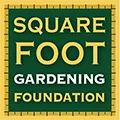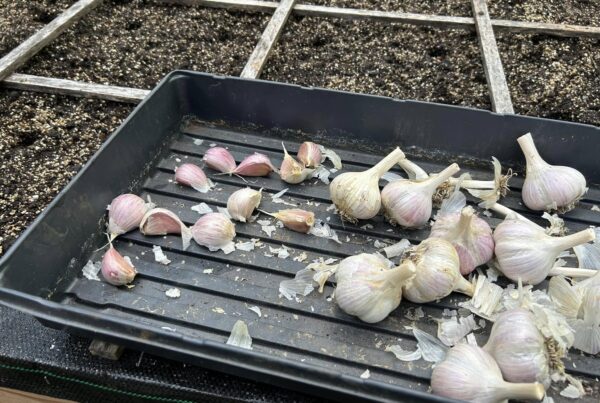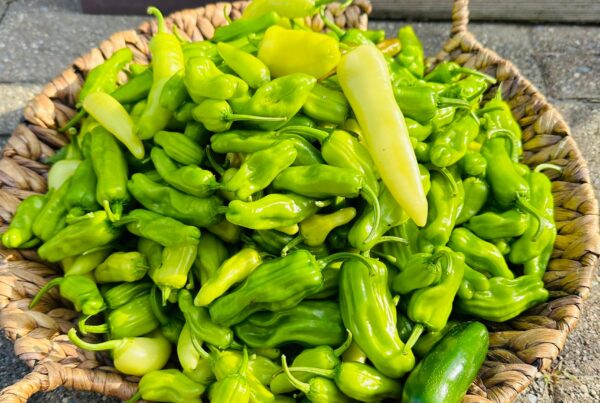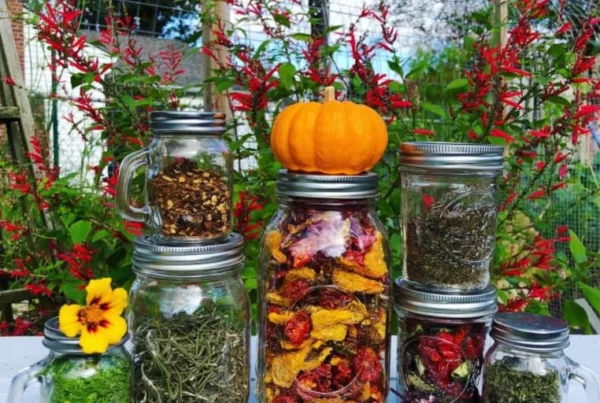Written by Kristina Hicks-Hamblin
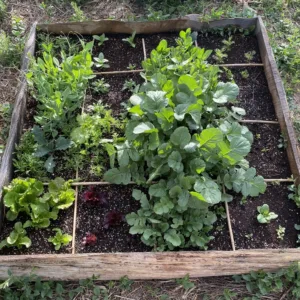 Are monetary concerns holding you back from growing your own tomatoes, squash, and lettuce? Try Square Foot Gardening – a time and energy saving gardening approach that can be easily adapted to create a low budget garden.
Are monetary concerns holding you back from growing your own tomatoes, squash, and lettuce? Try Square Foot Gardening – a time and energy saving gardening approach that can be easily adapted to create a low budget garden.
In addition to being the perfect method for newbies, the food growing technique created by Mel Bartholomew is highly adaptable. In short all you need is a raised bed, growing medium, seeds, water, and sunshine!
Here’s how to start a SFG on a small budget:
Use Repurposed and Salvaged Materials
The first thing you’ll need to do when starting your SFG is to build raised beds.
While many SFG enthusiasts use new lumber to construct this foundational part of the SFG Method, beds can also be built from repurposed wood. Be sure there aren’t any toxic finishes on the wood, you don’t want it to leach into your garden.
Other options include straw bales, concrete blocks, or anything that is about six inches tall and can contain growing medium while providing drainage.
Once beds are formed, you will need to use cardboard or garden fabric to line the bottom to prevent weeds growing up into your SFG. Now you’re ready to fill the bed with growing medium, then the next thing you’ll need is a grid.
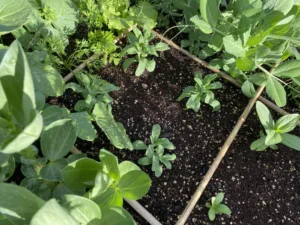
Bamboo grids.
Grids that create square foot sections in the raised bed are the quintessential element of the SFG Method.
These are often built out of new wood lattes, but salvaged materials can be used instead. My preferred material for this is bamboo.
Many neighborhoods across the US contain groves of invasive bamboo, particularly in California, the Southeast, and the Mid-Atlantic. The owners of these groves are often more than happy to let folks harvest bamboo stalks – just make sure to ask first. I once built an entire fence out of bamboo salvaged in this way to enclose 12 SFG beds.
Slimmer stalks are perfect for creating the grids of a SFG bed, while larger stalks can be tied together with twine to form trellises. It can be a fun challenge to construct your own DIY trellis in this way! To cut bamboo, ratcheting pipe cutters work amazingly well.
Choose 100% Compost as a Growing Medium
Another expense when setting up SFG raised beds is the Mel’s Mix, which consists of compost, coarse vermiculite, and peat or a non-peat alternative.
However, those last two ingredients can create a hefty bill. Using 100% compost as a growing medium is an economical option recommended by Mel.
Compost can be purchased in bulk, making it even more cost effective. If possible, though, follow Mel’s recommendations and mix five different types of compost together to make sure you have a balanced blend.
You can also make your own compost, of course, but keep in mind that you’ll need eight cubic feet of compost to fill one four-by-four raised bed.
Grow or Trade Free Seeds
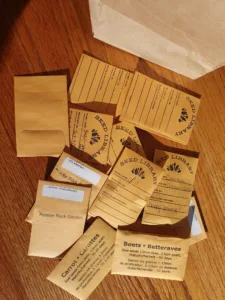
Seeds borrowed from a seed library.
Finally, there’s no need to head to the nursery center to buy transplants. Sowing seeds will save you lots of money.
And if you save seeds from your first season of crops, you can keep regrowing fresh seeds for as long as you keep planting them!
As you’re getting started though, you might even want to save on buying seed packs, so look for a local seed library or seed swap instead. Even if you don’t have seeds to share yet, gardeners tend to be quite generous, and you may find old or new friends ready to donate some seeds to your new hobby.
Once you have beds, grids, growing medium, and seeds, all that remains to supply is sunshine and water!
Need more guidance in creating your SFG beds as you start your low budget garden? Check out these resource pages: The Method, Compost, Planting Chart
Top photo by Kristina Hicks-Hamblin.
